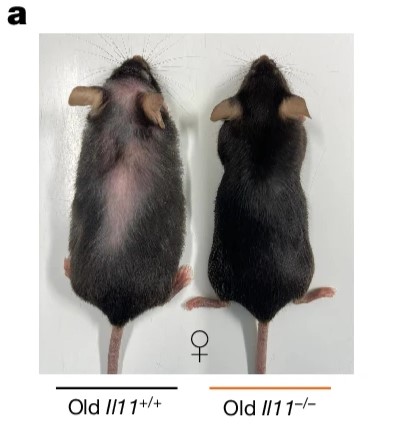From a soap that might cure early-stage skin cancer to a “supermodel granny” drug that could improve overall longevity, here are some recent scientific breakthroughs with the potential to change our lives for the better.
The field of science is advancing at an incredible pace as technology develops and more eager minds dedicate themselves to improving lives, especially in the field of health. A number of recent scientific breakthroughs have been making headlines, and for good reason, as they show great promise when it comes to tackling complex medical issues.
That said, much of this research is still in the testing stage; so it may take a while before their groundbreaking products hit the market in a way that’s accessible. Still, many of the healthcare procedures and treatments that we enjoy today—which have become quite ubiquitous—like vaccines and medicines, were once unthinkable.
Here are three particularly interesting and recent breakthroughs that could change the way we live for the better in the (hopefully) foreseeable future.
READ ALSO: Her Creations: 5 Ground-Breaking Inventions Made By Women
A Soap to Cure Early-Stage Skin Cancer
TIME recently named 15-year-old Heman Bekele its “Kid of the Year” for 2024, a big achievement for a young man with equally big dreams. The high schooler took an interest in chemistry since he was seven years old, and has been working tirelessly to develop a soap that could one day cure early-stage skin cancer.
The key ingredient for the soap is the front-line drug imiquimod. Research has found that it can help destroy tumors and fight off more than one type of skin cancer. However, the drug usually comes in a more expensive cream form—which is why Bekele is determined to develop a more accessible soap for the market to help people fight off the cancer at its early stages.


Creating such a product is no easy task, but with funding and assistance from the 3M company and Discovery Education, as well as a base of operations at the Johns Hopkins Bloomberg School of Public Health, his vision is slowly becoming a reality. He hopes that by combining a lipid-based nanoparticle with the soap, the imiquimod will be able to stick to the skin, rather than get washed away as suds, much like perfume or moisturizer
Currently, Bekele and his mentors are testing the soap on a group of mice with skin cancer. It might be a long while before it hits the market, especially since FDA certification can take a whole decade, but with the young man’s determination, this life-changing cure is just on the horizon.
The ‘Supermodel Granny’ Drug To Increase Lifespans
The possibility of increasing the human lifespan has always been a point of fixation within both the scientific community and the humanities. While immortality is a distant reality (at least for now) that will come with its set of repercussions or existential dilemmas, longevity is something that feels a lot more achievable (and less daunting).
Recently, researchers from the MRC Laboratory of Medical Science, Imperial College London and Duke-NUS Medical School in Singapore have been developing and experimenting with what they call a “supermodel granny” drug. The name comes from mice that they treated with the drug, labeled “supermodel grannies” for their incredibly youthful appearances.

Results show that the drug was able to increase the lifespans of these mice by almost 25%, with test subjects showing far lower levels of degenerative diseases (namely cancer), alongside improved muscle function, better fur health, and leaner bodies. This is because the drug eliminates the presence of a protein called interleukin-11 (IL-11). While this protein is essential in early development of the body, later on in life, it becomes a primary catalyst and driver for the aging process.
Researchers are testing the drug on human subjects, and stated that data suggests it is safe to take. While they aren’t sure if it will have the same longevity effects on humans, they hope that it’s the start of something good.
“This research is an important step toward better understanding aging and we have demonstrated, in mice, a therapy that could potentially extend healthy aging,” shares professor Anissa Widjaja of Duke-NUS Medical School to James Gallagher of the BBC.
A Nano-Robot That Can Destroy Cancer Cells
Also related to cancer research is the development of a nano-robot that can destroy cancer cells from the inside. The groundbreaking invention comes from a research team led by Björn Högberg at Karolinska Institutet, a leading medical university in Stockholm, Sweden.
According to an article on the matter from the university website, researchers have tested these nano-robots on mice. The hexagonal-shaped nano-robot structures can instigate cell death—basically functioning like a “kill switch” by using DNA as a building material, which Högberg and his team refer to as “DNA origami.”

“We have managed to hide the weapon in such a way that it can only be exposed in the environment found in and around a solid tumor,” Högberg explains in the feature. “This means that we have created a type of nanorobot that can specifically target and kill cancer cells.” These nano-robots identify the cells by sensing the typically low pH or acidic microenvironment that surrounds them before activating. Mice with breast cancer who received an injection of the nano-robots experienced “a 70% reduction in tumor growth” compared to those with an inactive version of the robots.
Of course, like the other breakthroughs in this list, the discovery still needs further testing. As researcher Yang Wang adds in the article: “We now need to investigate whether this works in more advanced cancer models that more closely resemble the real human disease. We also need to find out what side effects the method has before it can be tested on humans.”
Banner photo by Boxuan Shen from the Karolinska Institutet website.





